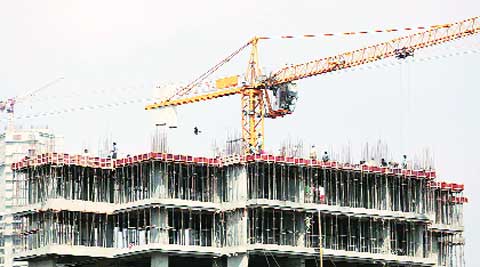The
Indian Express 17.02.2014
BMC puts onus of structural stability on builders, makes approvals more stringent

In a bid to shift the onus of structural stability of a building on
developers, Municipal Commissioner Sitaram Kunte has made building
proposal approvals more stringent. Builders will now have to ensure that
precautionary measures are in place during designing, construction and
maintenance of a proposed building.
“Building proposals will be approved if all underground structural
members are designed considering the effect of chlorinated water,
sulphur water, seepage water… Due care while constructing the same
should be taken and a completion certificate shall be insisted on before
granting further certificate of commencement (CC) beyond the plinth
from the licensed structural engineers,” says a February 4, 2014,
circular issued by the office of municipal commissioner.
Civic officials said the “chances of building collapses often
increase as the foundation of a structure is not as per the required
structural stability measures. Underground water from drains might
corrode the reinforced cement concrete (RCC) beams, which is the
foundation of a building”.
Developers and architects, however, argue that such a directive is not foolproof.
“Various civic infrastructure such as storm water drains and sewage
lines are damaged due to infrastructure work, causing seepage, which can
affect a particular building. Also, while a building can ensure
structural stability at the underground level, this exercise is useless
if the neighbouring building has seepage problems,” said Shirish
Sukhatme, president of the Practising Engineers Architects and Town
Planners Association (PEATA).
structural stability of buildings in the city. In the Aftab Manzil
collapse in June last year, which claimed 10 lives, the builder had made
illegal alterations on the ground floor, including removal of beams and
columns. In yet another case, an illegal building in Mumbra, which was
constructed without any structural stability design, collapsed like a
pack of cards killing 61 people in April last year.

